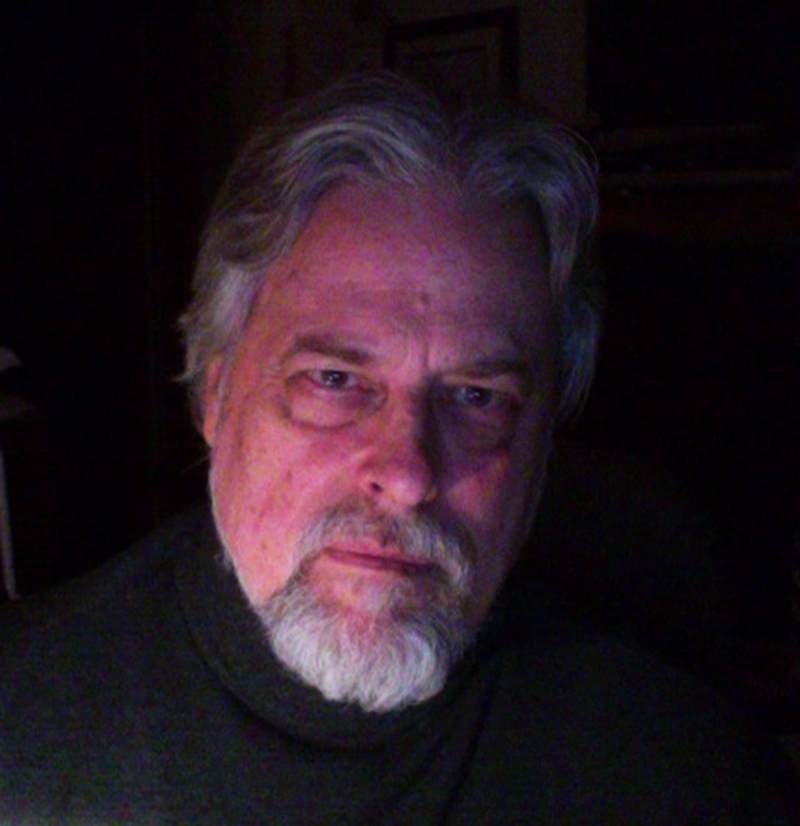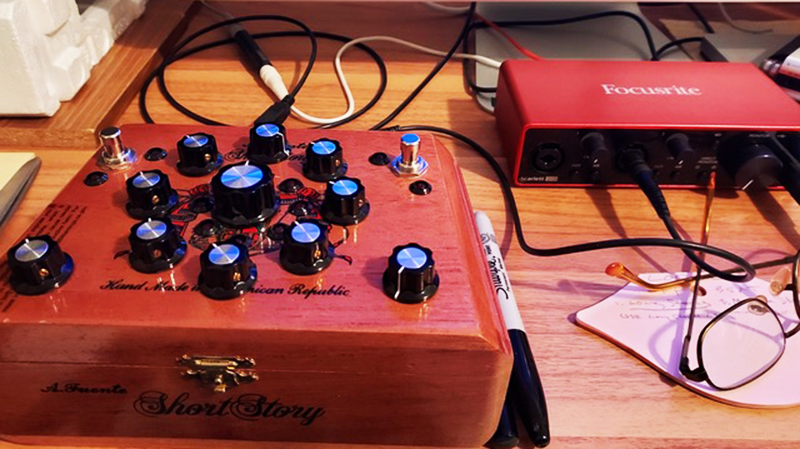
Ken Moore is a multi-instrumentalist who comes from Baltimore, Maryland, and very early decided to incorporate synthesis into his art. Moore started to explore electronic music in the mid ’70s and in 1980 he established his own label, Anvil Creations, and in the following four years released approximately 20 tapes of solo and collaborative works he had recorded between 1973 and 1983.
His solo work of that era bridges abstract electronic music with synthesizers and Mellotron and more psychedelic rock-based material he had primarily produced in the early to mid ’70s.
He also collaborated with Stuart Rosenzweig and founded the progressive rock duo Moore/Myers with David Wayne Myers. Moore was also very active in James Finch’s International Electronic Music Association (IEMA) until he took a break in the late 80s.
After a long public hiatus he returned in 2013 and has been active ever since. We welcome “Pollywog”, a very special Session demonstrating minimalism only playing a small synth: The Short Story
OK, I have to explain that I consider the Short Story synthesizer to be my first “modular” device, although it really has no patch cords, nor can it be controlled by another module. The SSS uses a process known as Direct Digital Synthesis (DDS) for each of the eight voices, the processor inside the Short Story multiply the “tuning word” of each voice by a factor determined by the rate knob, which causes the tones to rise (or fall) accurately and in sync with each other. I am very impressed with the clear sound that it produces.
Allen Myers has invented this eight voice monophonic unit that he made fit into a cigar case. The cigars were called “Short Story”, and so the name transferred to the invention.
What have you been working on lately, and do you have any upcoming releases or performances?
At the moment, having finished “Pollywog”, I have been recording drum tracks for use in future compositions. Now I am ready to try some software sounds using my Novation LaunchKey. I did a full album with that a few years ago, allowing myself only improvisations at the time. The album was “Night Sky”, and I married some tracks that I had made with my Moog Sub Phatty, released several years prior to that using the title “Electronic Mutations”. It worked very well, so I may try arranging something like that with percussion. I am still exploring methods of combining techniques that I have tried, in order to come up with a unique method of composing sounds. I also am fascinated with bells and chimes, so I will most likely do something exploring atonal pieces, maybe even including triangles.
Since COVID19 has affected socializing in the States, my annual visits to Baltimore have been suspended. Previously, I traveled there from NE Ohio every November for an event taking place at their National Electronic Museum. My last one being in 2019, where I created five cardboard boxes with assorted percussion items hanging inside, with a condenser mic in each box. These were played by moving the boxes during a singing bowl and tam-tam performance.
During the last decade, Dave Vosh and I performed as Safe Creations at various places, including the NEM. Dave uses his A-100 Modular System, usually with a controller, and I would play an array of gongs.
I do have regular releases on two separate Bandcamp sites. I try to release one each month on the Moore/Myers site, and another one on the Anvil Creations site. The AC page also promotes other musicians, and all posts there are [potentially] free downloads. The Moore/Myers page has all pre-priced albums, sometimes offering collaborations with other artists.
In January of this year, I released a solo Short Story album called “Ring Modulations”. Past albums featuring the Short Story module are “Weather Ore Naught” and “Vast Din” (in 2020). I also uncovered an open reel tape that had recordings of an EMS Synthi AKS, from 1973, and released some enhanced tracks on both my B/C sites using the name “Zurf Vas”(1 & 2).
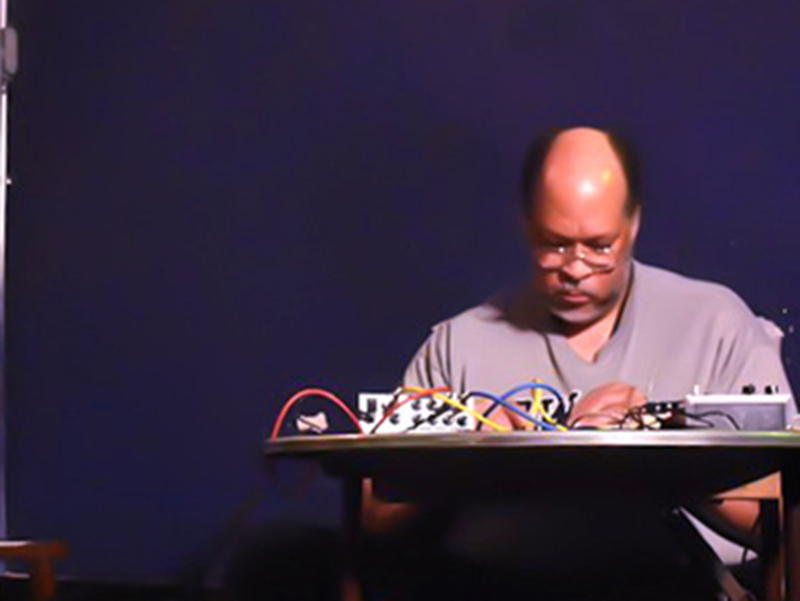
You started to explore Electronic music in the mid’70s while working in various (progressive) rock formations.
How was the « scene » back then?
I did, but it was because of an electronic music course that I attended at a local university in 1973. My professor was a big Steve Reich and John Cage advocate, so I was introduced to a more avant garde scene at that time. We had a large Moog 3 (with the sequencer) in the classroom, and all of us got to play with it, using the keyboard and ribbon controller. At the time, Iso Tomita and Wendy (then Walter) Carlos were doing electronic music using the Moog, but they were playing classical music mostly. My eye was on the keyboardist in ELP, and I was anxious to involve a synthesizer with my organ music I was writing at that time. I did try listening to Morton Subotnick’s “Touch” at that time, but the concept of pure electronic music was too new to me. I did like David Vorhaus’ “White Noise” album, and I was really a big fan of Mort Garson’s “Black Mass” and “The Unexplained” (recorded using the name Lucifer).
As I bought and began to use my first [Mini]Moog Synthesizer, I became aware of its abstract uses in what I defined as “electronic music”. My earliest recordings (from 1974-1980) included the Moog, but also incorporated concrete sounds and other instruments in the mixes. Often times I reversed the open reel tape on my 1/4” tape machine, and played recordings I had made backwards.
I see electronic music as having evolved from the use of cut-and-spice techniques used by Pierre Schaeffer and other musique concrete composers in the early twentieth century. An early mentor was Swedish musician Ralph Lundsten, along with his colleague, Leo Nilsson. I was fascinated with the sounds these composers created, but I knew that I would never be able to afford the big equipment that they used. I dropped out of school after my EM course and worked all my life as a laborer. Ultimately, it ruined my back, and I cannot set up or break down a drum set to play live anymore. I did not know much about the electronic music “scene” as a youth, but I did attempt a few live concerts using a borrowed piano, my Hammond organ, my MiniMoog and and ARP string ensemble in 1980 and 1981.
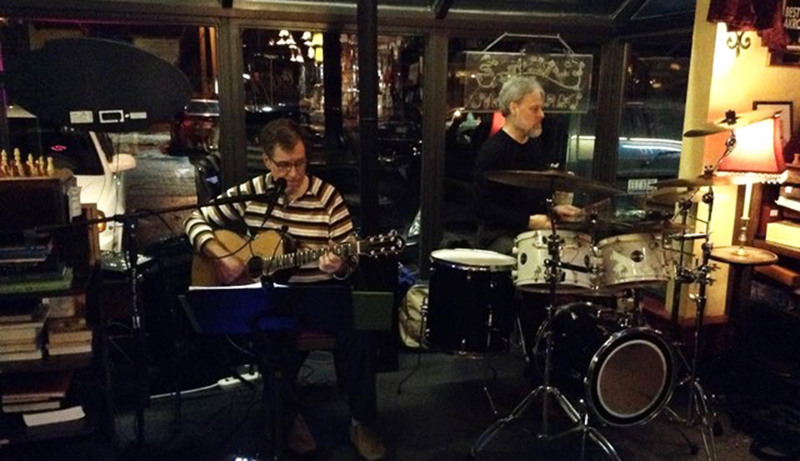
You were associated with the Tape Music scene, can you tell us about Anvil Creations?
As I had recorded many art rock pieces and experimental Electronic Music tapes, I discovered that there was a promoter of such things on the West Coast. Archie Patterson printed a regular music magazine called Eurock (From 71 to 73 a radio show playing European Prog Rock and then a magazine + label), and I sent him a cassette tape [of my work] hoping to get distribution there. The tape was a mixture of rock and abstract pieces called “Frame Of Reference”. He did not think it would sell in his market, so I put together a tape of some of my earliest “electronic” music, and he liked it very much. “Tempus Fugit” sold well, but I had to go elsewhere to sell my “To Come Into Being” tape.
Thus the idea of selling tapes myself began to form in my thoughts. From Eurock, I saw that there were many others who were selling tapes such as mine. It wasn’t long before I became aware of the International Electronic Music Association, and I had already started a mail order “business” of my own, a cassette distribution “company” named Anvil Creations. When the general manager of the IEMA could not keep up with sales of the first Group Tape Project, I was quickly placed in the position of Music Director, and began to compile a second Group Tape using submissions from around the globe.
Anvil Creations became my studio name, and I was the director. I got connected with many people in many places because of my involvement with the IEMA.
Though there was a conflict within me, because I wanted still to do progressive music [i.e.- art rock].
After completing Group Tape #6, I left my position as Music Director and joined a rock band with a friend named Mark. It was in this group that I became friend with Wayne Myers and we left the band after three years to start recording an album of our own. Using the name Anvil Creations, along with all the contacts I had accumulated, I offered the tape to Alan and Steve over in the UK, and they loved it. They agreed to publish “Reaching Beyond The Sphere” on cassette, using the name Moore/Myers (an instrumental rock duo). By this time (mid 1980s) I had been selling about 20 tapes of my own music, including Moore/Myers using the name Anvil Creations.
Because of Eurock, Frank of the Vinyl On Demand label had acquired my “Tempus Fugit” cassette, and when he put together the American Cassette Culture box set, he was the one who contacted me and asked if I had any other tapes like that one. Frank spent the entire weekend listening to my music on Bandcamp in 2014, and by 2015 he had proposed a release of not just one, but five records using the music that I had transferred to digital files in 1999. Over the years, various people have referred to me as Anvil Creations. Some people put together a Discogs page for me and for Anvil Creations, and some people thought I had stopped making music altogether. Indeed, Alan has reviewed some recent albums in his Audion online magazine, and titled it “The Return of Ken Moore”.
How were you first acquainted to Modular Synthesis then?
Indeed I was not really acquainted with modular music many decades ago. I was aware of it, but other than that “Zurf Vas” album playing a Synthi AKS, I had no real involvement with modular synthesis. I became more aware of these modular devices when Dave Vosh agreed to do a concert with me in 2012. I proposed using an array of gongs, or more specifically, tam-tams in tandem with his electronic sounds, to give it a more visual appearance. I figured using a “cage” full of percussion would be more interesting to a crowd who would otherwise just be staring at one guy sitting at the modular with a stick. We had some appeal for live events, but our albums never really sold well. I do miss playing with Dave, but given the chance to perform again, I would probably do something with the Short Story or another synth, since I cannot move much these days.
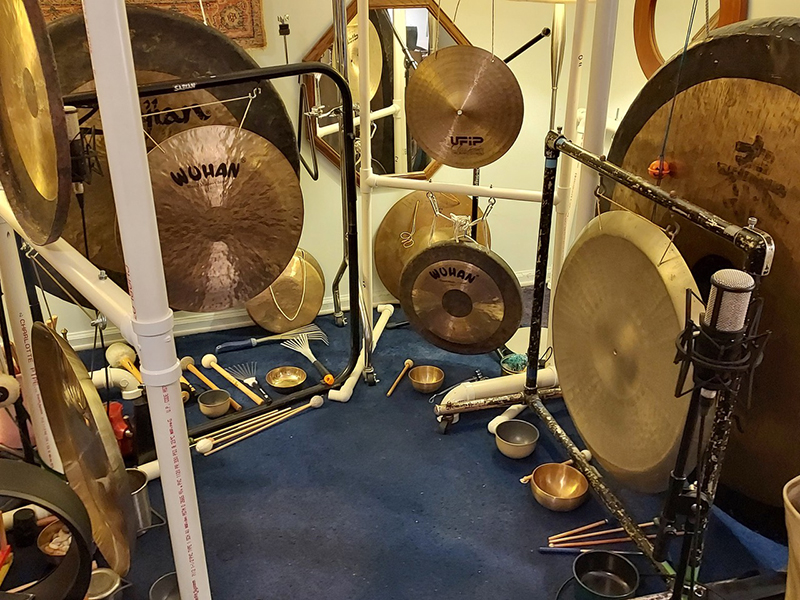
How does the Short Story marry with your other « compositional tricks »?
This ingenious device is perfect for my “intuitive” applications in composing improvised sounds. Over the years, I have learned to depend on chance and chaos to create the unusual pieces that I have accumulated on each album that I release. I have given up the idea of “composing” a song, note for note, as I once did with my organ and synth keyboards. My main tool for recording was always analog tape recorders. When my decks began to fail, and the magnetic tapes themselves began to disintegrate, I was forced to turn to digital [computer] software to compose my tracks. This “new to me” process began in 2006 or so, with an old laptop. I created my first experimental album of this century on it, called “XpairAmendT”. For awhile I used the Mac in tandem with a refurbished PC that I updated to Windows 2000 Professional. Once that computer’s memory was full, I had to turn to an iMac in 2009. GarageBand was my DAW, and until my laptop died, I made many recordings on it while on vacation from my day job.
So my first “system” was the Short Story, and I received it early in 2020. I use no sequencers, nor do I have any patch cords to fool with, and I am not acquainted with “loops”, so I record everything in real time. You have to understand, I grew up being a keyboard player, and I turned down the opportunity to buy an EMS “cheaper” in the early 1970s, in favor of the Minimoog, which had a keyboard! When I finally got good results with my Moog/organ pieces, I kept practicing drums until I could play along with myself on a simul-sync TEAC. In the mid-1980s, I invested in a Tascam 38, which had faster tape speeds and a larger reel. I also made the mistake of upgrading to an Emax [Emu] sampler while recording with Wayne [as Moore/Myers], and it changed our sound dramatically on the second album (Nine Days Wonder).
What was the effect or change on your compositional process?
Well, not using modular systems meant putting together a rig that was bulky, cumbersome, and quite a chore to move around and set up for gigs. Still, I usually composed for one specific instrument. I wrote piano pieces on a piano. I wrote my organ songs on a portable Lowrey organ. I created electronic pieces with my Minimoog synthesizer, and occasionally I blended all those together using the magnetic tape compilation method. It is true, I did wish I had an electronic system that was free from my past keyboard obsession after getting used to collecting and using field recordings. Once I found a refurbished Moog Sonic Six, and I recorded some things on that without using the keyboard at all. It was the closest thing I could get to the sounds made by Seesselberg or Lundsten.
I use whatever source I am inspired to explore. I work with the Short Story Synthesizer for awhile, and then put it aside so that I don’t get into a routine with it. I like to approach instruments or sounds with a fresh start, being inspired by the uniqueness of the sound itself. I’m not sure you can call it “random”, but sometimes I put two different recordings together to see how they blend and how my mind reacts to the combination. More like Chaos, I would assume, and it tends to get very thick and congested sometimes; yet I do like the complicated results achieved by chance.
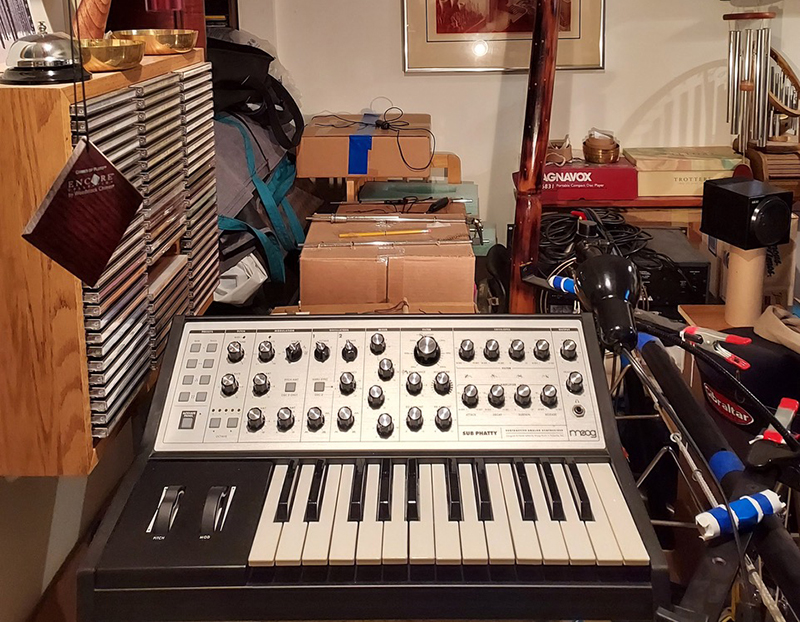
Quite often modularists are in need for more, their hunger for new modules is never satisfied? How do you explain that?
I began to learn to play drums at age 20. As I began to use drums with other people, I found that I always wanted more, and that led me to buying many different drums, assembling them in various arrangements to fit the situation. At one point, I was told that I could have done the same thing with fewer drums. That’s when I realized that I was going overboard. I think modular enthusiasts suffer the same desire : to have more always seems better.
However, I am at the point in my life now where to use much less is usually sufficient to achieve my purpose. It is human nature to want more. I can only observe that once we have “too much”, it is then that we realize the value of having only very little. Less is more prone to creativity, in my opinion, but I have been called a “resourceful” person. If I were to compose with a modular system, I think that I would use whatever I had at my disposal to get a different sound other than what happens originally.
Instrument building may actually be quite compositional, defining your sonic palette, each new module enriching your vocabulary. Would you say that their choice and the way you build your systems can be an integral part of your compositional process? Or is this the other way round and you go after a new module because you want to be able to sound-design some of your ideas?
Absolutely, the building of a larger system can lead one to enhance their compositional skills. Once one has developed his or her own “style” and a definite purpose, then for sure, looking for a specific module is necessary to sound-design something new that could not be done otherwise. So I see that while developing one’s techniques, the statement in question one is true. Then when one has established oneself with experience, question two becomes more relevant.
Do you prefer single-maker systems like Moog or making your own modular synthesizer out of individual components form whatever manufacturer that match your needs.
That is an interesting question. From my past experiences, you see that I am fond of Moog equipment. However, if I had made more money in my youth, I would probably want to explore something from all different manufacturers. So in my position, if I see an instrument that I want, then it has to meet the criteria in the question, “is it within my limited budget so that I can afford it?”; it is a matter of cost for me.
I found a less expensive Theremin one time, so I bought it to see if I could learn to play without touching an instrument. Sure, I could make noises with it, but could I make Music? I found that becoming a confident theremin player is akin to being a skilled violinist. I didn’t have the patience for it.
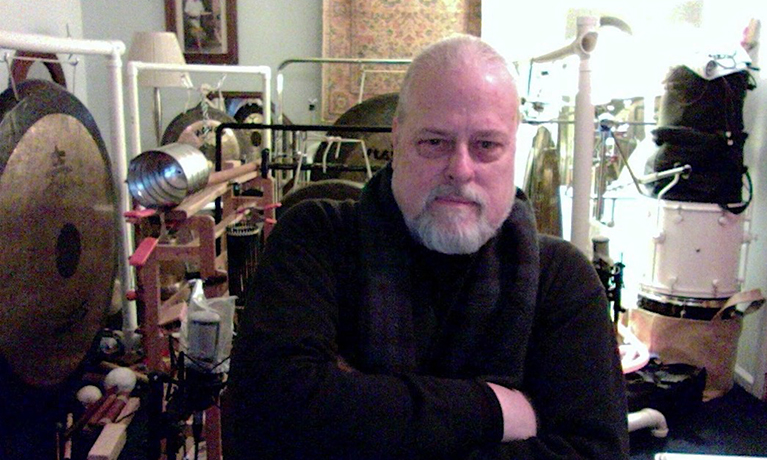
How has your system been evolving?
Concerning the things that I now own, I can say that I have acquired more of what I can use, but less of the quantity of things that I can use. In recent days, having a modern and useful computer is more of a necessity for me. With a good digital recording system, I can better manipulate sounds and instruments, and combine them in ways that would have taken me longer to do with just tape, and with a better quality of results.
The addition of the Short Story was important for me, not only because it was affordable, but because I perceived that not too many people were going to invest in one. Allen Myers made the Short Story available online for Acoustic Imaginearing (his company), but he has had health issues and was forced to remove it from availability.
At this time, I am the only musician owning and composing with the SSS.
I recorded Pollywog with Pro Logic X, which was necessary for the use of a Ring Modulator which is included in the software package. The only other device that was used would be Roland’s Edirol digital recorder, which was used to transfer tracks back to the iMac where the pieces were arranged.
Can you outline how you prepared and performed Pollywog?
The SSS has a monophonic output, which is plugged into my Focusrite Scarlett 2i2, the necessary interface for my computer. I record one single take at a time, using either left or right channels, but enabling playback in stereo. Then I am able to play the track back using the core audio from my computer into the Edirol, while modifying the sound from Short Story with the Ring Modulator plug-in in real time as it plays, transferring the recording back into Pro Logic on a separate track in the DAW. Usually two tracks are necessary to complete the effects, and I keep one track unchanged and pan it center in the stereo field, keeping the RM effected recordings balanced left and right. Putting the completed compositions into my document folder, I then open Audacity [for Mac] and complete the audio quality, amplifying the stereo recordings as necessary, and on one particular track…
Remember that Short Story has eight individual voices [aka-oscillators] that are designed to glide either upward or downwards, depending on the settings of the eleven knobs and two switches (which are dual settings each). The hardest thing to do is keep the dominate frequency stable, that is being able to hold a note static for any length of time. Given that I generally used three recordings for each finished piece on Pollywog, you have 24 individual voices that are being combined into the finished sound, making it rather dense and somewhat “busy” as it were, so I had to keep the length of each composition to a minimum (even when some of the takes were up to 15 minutes in length) of 6-8 minutes each. Shortening the longer pieces was best achieved by using Audacity.
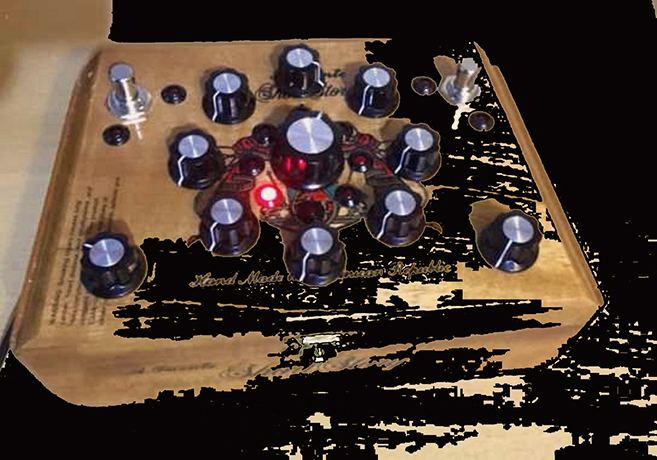
What do you think that can only be achieved by modular synthesis that other forms of electronic music cannot or makes harder to do?
I think that modular synthesizers can be used effectively in live situations, when there are sequencers and loops involved. I have watched some of Richard Devine’s posts on Facebook, and have seen why his arrangements and creations are widely used in a professional setting. Many people are using computers to make professional soundtracks or commercials. I believe that modular synthesis is much more creative and enables more of an artistic expression from the composer/musician.
What would be the system you are dreaming of?
Well, having watched Suzanne Ciani’s performance with a Buchla system, I would love to be able to use something like what she has, but mostly I regret not having invested in the EMS package that I encountered in college. For most of my life I was a dedicated keyboard musician turned drummer. I tried to stay away from electronic percussion as much as possible.
It has only been recently that I would dare to imagine myself playing a real modular system like a Serge.
Are you feeling close to some other contemporary Modularists?
I have a good friend with whom I performed in the last decade. We have been friends since the early IEMA days of the 1980s. Dave Vosh has been using the Doepfer A-100 for years.
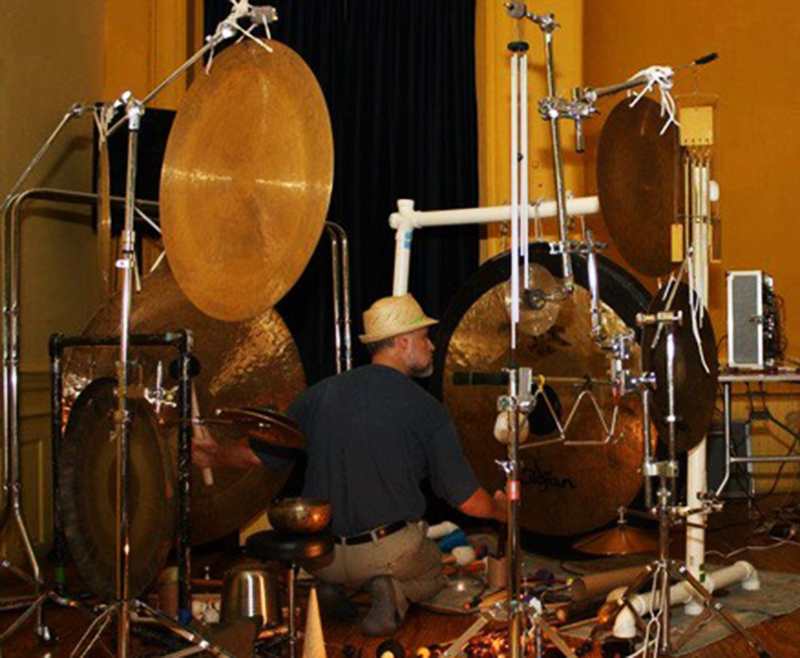
Which pioneers in Modularism influenced you and why?
I listened to a lot of Suzanne Ciani’s music on Private music before I knew that she was a modular synthesist.
I consider Ralph Lundsten’s early work (with Leo Nilsson especially) modularism, and of course Morton Subotnick was responsible for my listening to pure electronics at an early age.
I also followed Thomas Park when Google had a social media site like Facebook. Thomas now has a release on Broken Tape Records using his modular system. It is called “Dub Delivery”.
Any advice you could share for those willing to start or develop their “Modulisme” ?
I can only speak as an artist. My personal history with electronic music was abstract at best. I was experimenting and doing what I felt to be an expression of myself soon after school. What I desired was to create sound that was not in step with the status quo; that is to say, I never wanted to be “commercial” in my art. I believe that the only wise God knew who I was before I ever knew Him, and I feel that I was always protected and influenced by my Creator. My personal beliefs are kept separate from my art, because I do not feel that musical platforms are particularly conducive to effective witnessing. If you are searching for a way to express yourself in a truly creative way, using modular systems seem to be a really good method of artistic invention. If you are lost or confused, or even scared of your mortality, then I would recommend looking into allowing Jesus access to your heart. The freedom that I have received in Christ lets me explore the “whole man” that I was created to be. Many of you may be offended by “religion”, but I can say that I am not a religious man. I am just a man who has had a personal encounter with a living God, and am willing to share that hope in a triune God should anyone have questions about my faith.
That having been said, my advice for anyone willing to start or develop their “Modulisme” is simply this:
set your goals high and keep your standards reasonable. No one of us is perfect, and the only way to achieve your dream is to be persistent, even when you fail or make mistakes. Forgive yourself, and in the same way, try to be kind to others who are trying to express themselves. We all have a story to share, and music is the best way to say it.
